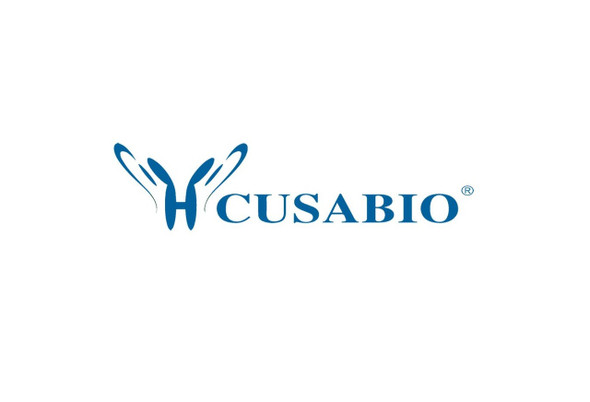Cusabio Human Recombinants
Recombinant Human Poliovirus receptor (PVR) | CSB-CF019093HU(A4)
- SKU:
- CSB-CF019093HU(A4)
- Availability:
- 18 - 23 Working Days
Description
Recombinant Human Poliovirus receptor (PVR) | CSB-CF019093HU(A4) | Cusabio
Alternative Name(s): Nectin-like protein 5
Gene Names: PVR
Research Areas: Others
Organism: Homo sapiens (Human)
AA Sequence: WPPPGTGDVVVQAPTQVPGFLGDSVTLPCYLQVPNMEVTHVSQLTWARHGESGSMAVFHQTQGPSYSESKRLEFVAARLGAELRNASLRMFGLRVEDEGNYTCLFVTFPQGSRSVDIWLRVLAKPQNTAEVQKVQLTGEPVPMARCVSTGGRPPAQITWHSDLGGMPNTSQVPGFLSGTVTVTSLWILVPSSQVDGKNVTCKVEHESFEKPQLLTVNLTVYYPPEVSISGYDNNWYLGQNEATLTCDARSNPEPTGYNWSTTMGPLPPFAVAQGAQLLIRPVDKPINTTLICNVTNALGARQAELTVQVKEGPPSEHSGMSRNAIIFLVLGILVFLILLGIGIYFYWSKCSREVLWHCHLCPSSTEHASASANGHVSYSAVSRENSSSQDPQTEGTR
Source: in vitro E.coli expression system
Tag Info: N-terminal 10xHis-tagged
Expression Region: 21-417aa
Sequence Info: Full Length of Mature Protein
MW: 46.7 kDa
Purity: Greater than 85% as determined by SDS-PAGE.
Relevance: Mediates NK cell adhesion and triggers NK cell effector functions. Binds two different NK cell receptors: CD96 and CD226. These interactions accumulates at the cell-cell contact site, leading to the formation of a mature immunological synapse between NK cell and target cell. This may trigger adhesion and secretion of lytic granules and IFN-gamma and activate cytoxicity of activated NK cells. May also promote NK cell-target cell modular exchange, and PVR transfer to the NK cell. This transfer is more important in some tumor cells expressing a lot of PVR, and may trigger fratricide NK cell activation, providing tumors with a mechanism of immunoevasion. Plays a role in mediating tumor cell invasion and migration. (Microbial infection) Acts as a receptor for poliovirus. May play a role in axonal transport of poliovirus, by targeting virion-PVR-containing endocytic vesicles to the microtubular network through interaction with DYNLT1. This interaction would drive the virus-containing vesicle to the axonal retrograde transport. Acts as a receptor for pseudorabies virus. Is prevented to reach cell surface upon infection by human cytomegalovirus /HHV-5, presumably to escape immune recognition of infected cell by NK cells
Reference: "Cellular receptor for poliovirus: molecular cloning, nucleotide sequence, and expression of a new member of the immunoglobulin superfamily." Mendelsohn C.L., Wimmer E., Racaniello V.R. Cell 56:855-865(1989)
Storage: The shelf life is related to many factors, storage state, buffer ingredients, storage temperature and the stability of the protein itself. Generally, the shelf life of liquid form is 6 months at -20?/-80?. The shelf life of lyophilized form is 12 months at -20?/-80?.
Notes: Repeated freezing and thawing is not recommended. Store working aliquots at 4? for up to one week.
Function: Mediates NK cell adhesion and triggers NK cell effector functions. Binds two different NK cell receptors
Involvement in disease:
Subcellular Location: Isoform Alpha: Cell membrane, Single-pass type I membrane protein, SUBCELLULAR LOCATION: Isoform Delta: Cell membrane, Single-pass type I membrane protein, SUBCELLULAR LOCATION: Isoform Beta: Secreted, SUBCELLULAR LOCATION: Isoform Gamma: Secreted
Protein Families: Nectin family
Tissue Specificity:
Paythway:
Form: Liquid or Lyophilized powder
Buffer: If the delivery form is liquid, the default storage buffer is Tris/PBS-based buffer, 5%-50% glycerol. If the delivery form is lyophilized powder, the buffer before lyophilization is Tris/PBS-based buffer, 6% Trehalose, pH 8.0.
Reconstitution: We recommend that this vial be briefly centrifuged prior to opening to bring the contents to the bottom. Please reconstitute protein in deionized sterile water to a concentration of 0.1-1.0 mg/mL.We recommend to add 5-50% of glycerol (final concentration) and aliquot for long-term storage at -20?/-80?. Our default final concentration of glycerol is 50%. Customers could use it as reference.
Uniprot ID: P15151
HGNC Database Link: HGNC
UniGene Database Link: UniGene
KEGG Database Link: KEGG
STRING Database Link: STRING
OMIM Database Link: OMIM







